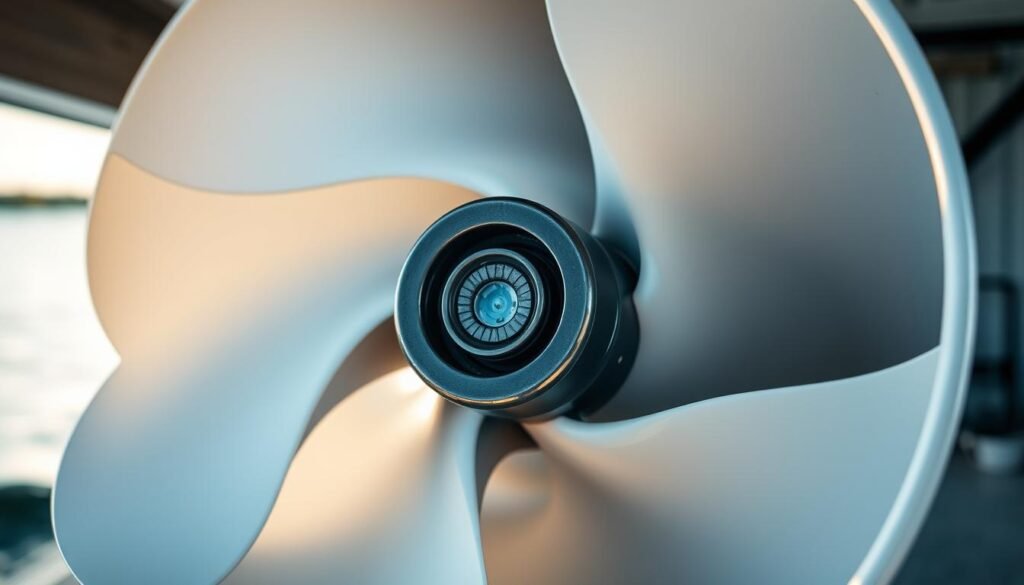A boat impeller is a small but vital component in marine engines. Located inside the water pump, it ensures raw water flows efficiently through the system. This process is essential for cooling the engine and maintaining optimal performance.
Made from durable materials like rubber or nitrile, the impeller features a fan-shaped design. It rotates on a shaft within the pump housing, drawing water into the engine. Without it, overheating and system failure can occur, leading to costly repairs.
For boat owners, understanding this part is as crucial as knowing about brakes or tires in a car. Regular inspection and proper lubrication can extend its lifespan. By staying informed, you can ensure your vessel runs smoothly and avoid unexpected breakdowns.
Overview of Boat Impellers
Efficient water flow in marine engines is powered by a critical component. This part ensures the engine stays cool, preventing overheating and damage. Understanding its role and design is essential for maintaining optimal performance.
Role in Marine Engine Cooling
The impeller is a key player in the cooling system. It rotates within the pump housing, drawing water into the engine. This process helps regulate temperature and prevents system failure.
Engine RPM influences the impeller’s speed, affecting water flow. Proper lubrication ensures smooth rotation and reduces wear. Regular maintenance keeps the system running efficiently.
Design and Materials: Rubber vs. Nitrile
Impellers are made from durable materials like rubber or nitrile. Each material has unique properties that affect performance and longevity. Manufacturers often recommend specific types based on usage and conditions.
| Material | Durability | Best Use |
|---|---|---|
| Rubber | High flexibility, moderate durability | Standard marine conditions |
| Nitrile | Enhanced resistance to heat and chemicals | Harsh environments |
Proper lubrication is crucial for both materials. Mechanics recommend oil-based grease or dish soap for smooth operation. Regular inspection and replacement intervals prevent unexpected breakdowns.
Components like the pump housing, gasket, and plate work together to support the impeller. Using approved equipment ensures the system remains in top condition. Reliable service and online navigation of maintenance tips keep boat systems running smoothly.
In-Depth Look: What is a boat impeller?
The heart of a marine cooling system lies in a small yet powerful component. This part ensures water flows smoothly, keeping the engine cool and preventing overheating. Understanding its functionality and design is crucial for maintaining optimal performance.

Understanding the Component Functionality
An impeller is a fan-shaped part that rotates within the water pump. Its curved blades draw water into the engine, ensuring efficient cooling. The design allows it to compress upon insertion, creating a tight seal with the pump housing.
Proper engagement with the shaft is essential for smooth operation. Misalignment can lead to wear and reduced efficiency. Regular inspection helps identify issues early, avoiding costly repairs.
How the Impeller Powers the Water Pump
The impeller’s rotation generates the force needed to move water through the system. Its vane placement and blade curvature are optimized for maximum flow. This process is critical for maintaining the engine’s temperature.
Replacement intervals vary based on usage and conditions. A new impeller restores proper function, ensuring the system operates at peak efficiency. Following manufacturer guidelines extends the component’s lifespan.
| Material | Durability | Best Use |
|---|---|---|
| Rubber | High flexibility, moderate durability | Standard marine conditions |
| Nitrile | Enhanced resistance to heat and chemicals | Harsh environments |
Proper care and maintenance are essential for long-term performance. Using accurate instructions and online resources helps boat owners stay informed. Neglecting this component can lead to system breakdowns and excessive wear.
Mantenimiento, Replacement, and Troubleshooting Tips
Keeping your marine engine in top shape requires regular attention to its cooling system. Proper care of the impeller ensures efficient water flow and prevents overheating. This section provides step-by-step guidance on lubrication, inspection, replacement, and troubleshooting.
Proper Lubrication Techniques and Inspection Guides
Lubrication minimizes friction during startup and operation. Use durable waterproof grease or dishwashing soap for smooth rotation. Apply it evenly to the impeller’s blades and shaft.
Inspect the impeller regularly for signs of wear. Look for cracks, stiff blades, or missing vanes. These issues can reduce efficiency and lead to pump failure.
| Material | Lubricant | Application |
|---|---|---|
| Rubber | Oil-based grease | Apply to blades and shaft |
| Nitrile | Dish soap | Spread evenly for smooth rotation |
When and How to Replace Your Impeller
Replacement intervals depend on usage and conditions. Follow manufacturer guidelines to avoid unexpected breakdowns. A new impeller restores optimal performance.
Use an impeller puller for safe removal. Check the pump housing, gasket, and plate for damage. Replace these parts if necessary to ensure a tight seal.
Tips for Preventing Engine Overheating
Regular maintenance is key to preventing overheating. Inspect the cooling system for blockages or leaks. Ensure the water pump operates efficiently.
Monitor engine temperature during operation. Address any unusual signs immediately. Proper care extends the lifespan of your boat engine.
Conclusión
Ensuring your marine engine runs smoothly hinges on one essential part. The impeller plays a critical role in the cooling system, preventing overheating and potential damage. Regular maintenance and timely replacement are key to avoiding costly repairs.
Proper lubrication and routine inspections can extend the lifespan of this component. Always carry a spare impeller and necessary tools for quick fixes. Addressing issues early ensures your engine remains reliable during navigation.
For boat owners, understanding the importance of this part is crucial. Professional service and adherence to manufacturer guidelines enhance safety and performance. Stay informed, and your vessel will operate efficiently for years to come.
